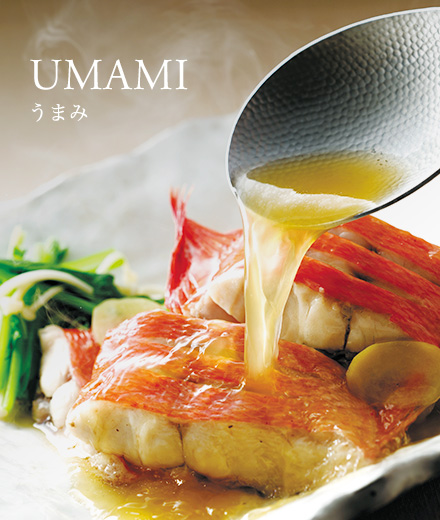-
The fifth sense of taste found in Japan,
the essence of deliciousnessDeliciousness depends not only on the taste of food when you eat but on many aspects like smell, food texture, atmosphere, physical condition, etc. However, “umami” is indicated as an independent taste. What is the definition of “umami”?
Sweetness, saltiness, bitterness and sourness had been said for long time as the basic constitution of taste. However, about 100 years ago, a Japanese scientist, Dr. Kikunae Ikeda had succeeded in extracting “another taste” contained within kombu (kelp) for its deliciousness.
-
He also identified this ingredient in kombu was a type of amino acid, glutamic acid (glutamate) and coined the term “umami” (savoriness) to describe its delicious taste as well. Following glutamate, other ingredients that offer umami were discovered: inosinate in katsuobushi (dried bonito) and guanylate in dried shiitake mushroom. “The 1st International Umami Symposium” was held in 1985. Since then, the word “umami” has been recognized as the term for the “fifth taste” internationally and officially.
Glutamate as extraction of amino acid on the one hand, and inosinate and guanylate from nucleic acid on the other, ingredients of “umami” can be roughly classified into two groups.
-
When the different sources of umami are used in combination, it would have a synergistic effect. The result of “multiple umami” would be greater than the sum of ingredients. “Umami”, with its deep and yet mellow flavor, is utilized as the base for any kinds of cuisine.
- Before|
- Next

